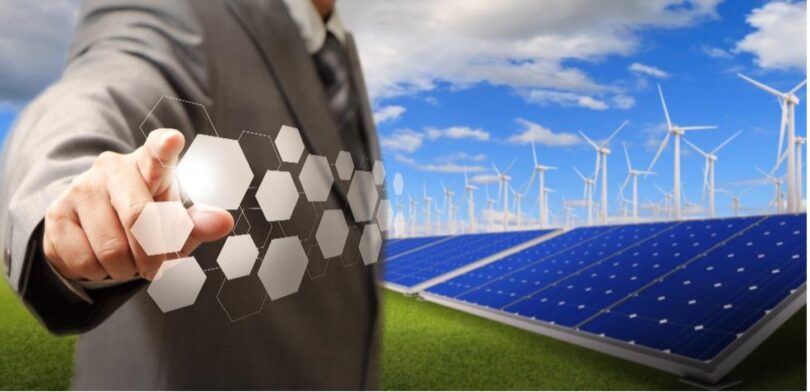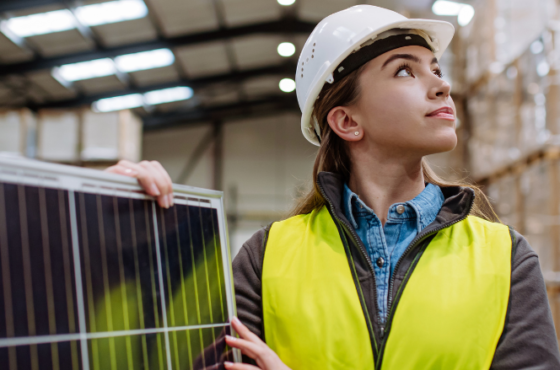Challenges of the Energy Transition
The ambitious goal to achieve a Net-Zero energy system by 2050 is full of challenges well beyond simply scaling renewable energy generation. Some of the most significant challenges associated with transitioning from fossil fuels to renewable energy include intermittency/reliability, environmental impacts, land availability and transmission infrastructure, and the need for businesses, governments, and consumers to cooperate at unprecedented global levels in order to meet Net-Zero objectives.
Intermittency/Reliability
Solar and wind energy are two of the most popular sources of renewable energy. They are also the most unreliable. When the sun doesn’t shine (night and cloud cover) and the wind doesn’t blow consistently (occurrence and velocity), it becomes very difficult to forecast base generation. Even slight variations of renewable power can have major consequences on electrical grids.
If we could store energy on the grid, that would solve our problems. However, because the instant an electron is generated it must be consumed – a wire can’t store electricity. To some extent, the intermittency challenge can be overcome through battery storage and using wind and solar power as complementary systems. Battery storage technology is rapidly improving but is still very expensive at scale and may be limited by elements such as lithium.
Environmental Impacts
One of the realities of transitioning to clean energy is the environmental impact of wind turbines, solar PV, and additional transmission lines.
Wind turbines require massive amounts of steel, concrete, iron, and copper. Solar power developments require large amounts of aluminum, copper, and lanthanides. All these material resources could become cost prohibitive due to depletion if wind and solar power become significant energy sources at the national and global levels. A renewables-only future would require building more steel capacity in the short term, and perhaps into the future.
Disposing of the materials used for turbines at the end of the structure’s life – 15 to 20 years – will be a challenge. The steel can be recycled but the concrete foundation and the large blades pose a disposition dilemma. Often, the material that comprises the blades is buried and not recycled. Further, the task to dispose of the toxic waste, nacelle found in the turbine’s generator is an environmental concern. Similarly, solar panels contain toxic chemicals including, cadmium telluride (CdTe), copper indium gallium diselenide (CIS/CIGS), cadmium gallium (di)selenide, copper indium gallium (di)selenide, hexafluoro-ethane, lead and polyvinyl fluoride. The resulting end-of-life waste must be addressed to make this technology a source of truly clean energy. (Frasher Institute)
“Solar panels create 300 times more toxic waste per unit of energy than do nuclear power plants”. -Jack Dini, Challenging Environmental Mythology.
Land Availability
Land availability can be another major challenge with wind turbines, solar PV, and additional transmission lines. A recent review of the spatial requirements of different renewable and non-renewable energy sources indicated that wind power requires ~370 times more land to generate 1 MW of power than natural gas. For solar power, the ratio drops to ~140 times that of natural gas. In contrast, nuclear power required only 3 times as much land as natural gas per unit of power generation (source= Van Zalk, P.; Behrens, P). ~1000 times more land was needed to generate a gigawatt of electricity from wind compared with nuclear power (source= Princeton University net-zero America studies summarized by D. Merrill).
If wind and solar become key contributors to meeting the Net-Zero goal in 2050, we will need 4 times the land area required for energy production. This equates to an energy footprint of about 16% of the contiguous US. Another recent estimate indicated that it would take over one-third of the continental US land area to meet present-day electricity demand with the sole use of wind and solar farms. This is 5 to 10 times more land than previously thought (source = Miller, L.; Keith, D.W).
Transmission Infrastructure
We will need a great deal of new transmission infrastructure to leverage renewable sources. To date, power transmission infrastructure was built with fossil fuel and nuclear plants in mind. This will pose a challenge for #renewable energy sources located outside of the existing transmission infrastructure. Not only is additional infrastructure costly to build but there is another cost of sorts, energy line losses. This occurs during transmission over long distances. Lastly, permitting and building additional power transmission lines will take years if not decades to build.
If #wind and #solar are to play a major role in bridging the gap from fossil fuel generation, the need for transmission line capacity is estimated to triple. Large urban areas with the highest electricity needs are typically long distances from abundant renewable energy sources like wind, biomass, location sunlight, and hydropower.
Economic Headwinds
As if the challenge to meet #Net-Zero mandates were not enough, the world is rapidly devolving into, at a minimum, a recessed economic environment and, worst case, a depressed economic reality/outlook. This does not bode well for the roughly USD $9.2 trillion investment needed to reach net zero on a global scale. As investors retreat to safety, it is likely that lower ROI areas that require investment will become underfunded during a global economic retreat. Without knowing whether the current business cycle is a blip on the radar screen or a full-on frontal attack that could last years, the appetite for investment in new green technologies (even despite government subsidies and support) could be thrown into question. Traditionally interest in being first to market may fall sway to tried and true methods of keeping business afloat during downturn economies.
Conclusion
The road to Net-Zero, as we explored together at #EMC18, is littered (ha eco pun!) with challenges that make achieving the 2050 objectives daunting. As we have explored in this article, of the challenges that we must overcome, solving for matching our current global demand for electricity, gas, and water is just one of the obstacles towards Net-Zero. Concurrently, we must solve for not only meeting these demands but also for the logical and physical limitations of the current solution on the table. Moreover, we must somehow co-operate as a global community at scales that ensure that the cost of such endeavors is not wholly borne by a few developed countries alone.
This by no means is intended to be an anti-Net Zero discourse. We wholeheartedly agree with the 2050 mandate and fully support all methods of meeting this challenge. It is, however, an acknowledgment of the daunting efforts that are required in order to reduce our global carbon footprint and transition to a new era of energy generation and consumption.
In our history, we have experienced #energy #transitions that moved from one main source of energy to a more efficient source. The difference now is that no one country stands alone in this journey. Moreover, we all must work together as a global community to meet these demands and, somehow, rise above geopolitical fragmentation and instability. All the while, 2050 is no less distant on the horizon. While we greatly support the awesome results of global research and development initiatives, the innovation we are already seeing in the industry, and the, seemingly, global thirst for traditional energy generation alternatives, we concurrently recognize that the window for optimism is rapidly closing.
Jonathan Goldstein (Sr. Vice President) and Kris Hertel (Business Development) are experienced Retail Energy leaders at CG Infinity.




